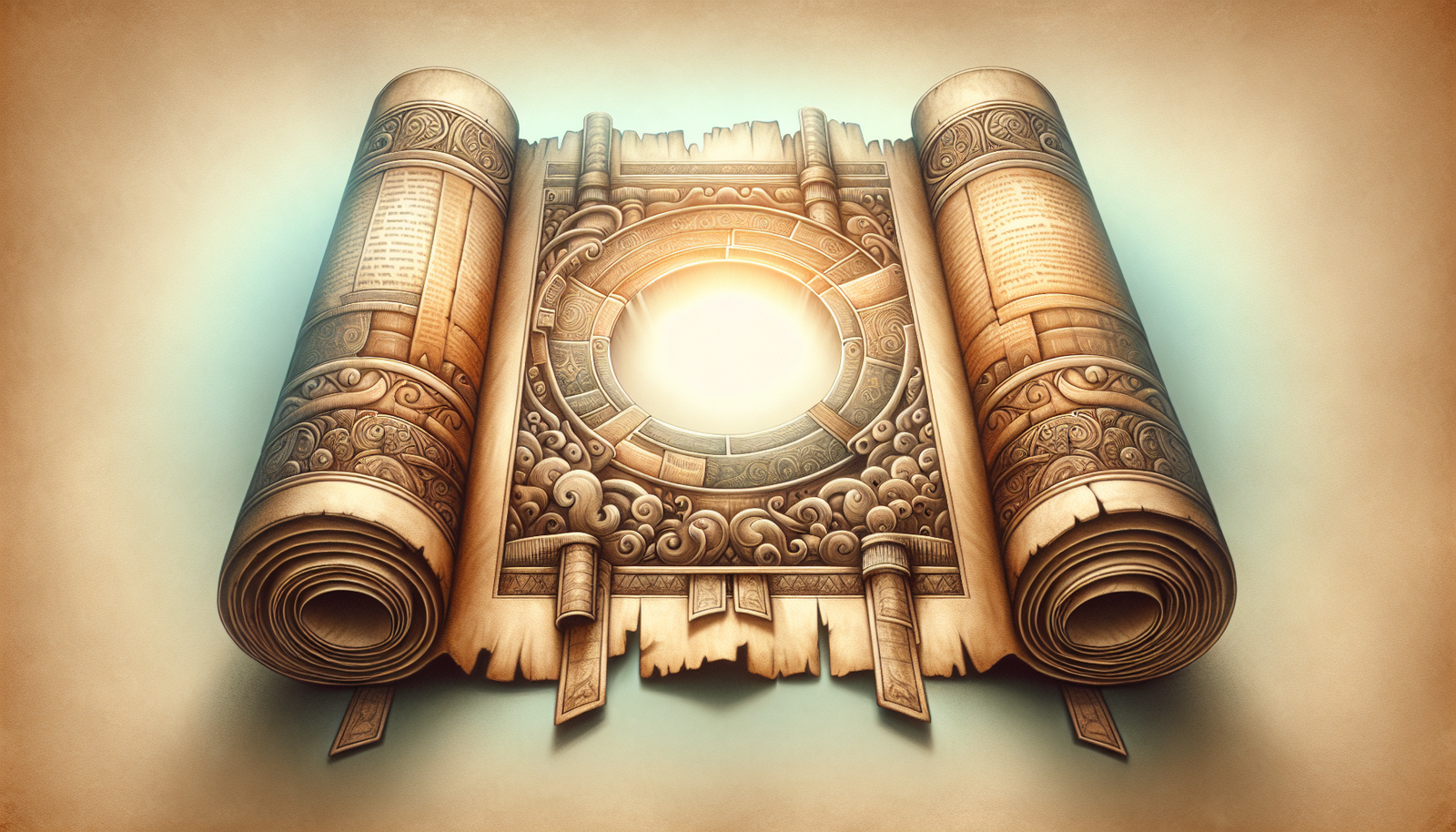Have you ever wondered how a singular translation of biblical texts could shape centuries of religious canon? Sometimes, a pivotal change in the history of religious texts offers us a lens through which to view cultural shifts, theological debates, and historical contexts. That’s exactly the impact Jerome’s Vulgate had on canon texts. But why would such a translation matter, especially in today’s world?
Author Information
I have a background in theology, having completed a PhD with a focus on ancient biblical texts and translations. My research has taken me to manuscript libraries around the world, which offered unparalleled insights into Jerome’s work. By understanding Jerome’s influence, we also unravel the intriguing ways religion and society intertwine—a topic that remains relevant in 2025.
Why This Topic Matters in 2025
In today’s rapidly changing world, understanding historical religious influences can offer insights into modern-day societal norms and conflicts. The Vulgate didn’t just shape religious texts—it influenced how generations thought about faith, morality, and culture. In a world driven by technology and globalization, grasping these connections enhances our appreciation for diverse perspectives and underlines the historical significance of translation and adaptation.

TL;DR
Jerome’s Vulgate is a Latin translation of the Bible from the late 4th century that profoundly impacted Christian canon texts. It served as the Catholic Church’s official Bible for over a millennium, influencing theological discourse, canon formation, and ecclesiastical tradition. Jerome chose original Hebrew and Greek scriptures over older Latin translations, fostering a deeper understanding of the original texts. The Vulgate’s meticulous approach to accuracy established it as a foundational text, shaping Western Christianity’s religious landscape and culture.
Key Sections
- The Origins of the Vulgate
- The Role of Jerome in the Translation Process
- Impact on Canonical Texts
- The Vulgate’s Theological Influence
- Societal and Cultural Ripple Effects
- FAQs
- People Also Ask
The Origins of the Vulgate
Historical Context
To truly appreciate the impact of Jerome’s Vulgate, it’s essential to understand its origins. In the late 4th century, various Latin translations of biblical texts existed, leading to inconsistencies and interpretations. Pope Damasus I recognized the importance of a unified, accurate Latin Bible. The project to translate the Bible into what became the Vulgate began around 382 CE.
Why Latin?
Latin was the scholarly and liturgical language of the Western Roman Empire. Christianity was spreading rapidly, and a reliable Latin translation was crucial for consistency in doctrine and worship. Jerome’s mission was to create a translation that aligned closely with the original texts—Hebrew for the Old Testament and Greek for the New Testament.
Manuscript Sources
Jerome faced the challenge of working with manuscripts that varied in quality. Ancient manuscripts such as the Hebrew Bible and the Greek Septuagint, alongside earlier Latin versions, informed his translation efforts. His choice to favor the Hebrew Bible for the Old Testament marked a return to what many believed were the most authentic texts.
The Role of Jerome in the Translation Process
Jerome: The Scholar
Jerome was not only a translator but also a skilled linguist with deep theological understanding. He studied Hebrew to ensure authenticity, demonstrating a commitment that was uncommon at the time.
Translation Methodology
Jerome employed a comparative method, referencing existing Latin, Greek, and Hebrew texts. His goal was to offer a translation that was both true to the original meaning and accessible to the Latin-speaking populace. This approach sometimes brought him into conflict with believers who favored familiar texts over accurate ones.
Challenges and Criticisms
Jerome faced significant opposition. Many questioned the need for a new translation, suspecting alterations to sacred texts. However, Jerome’s dedication to textual fidelity ultimately won the endorsement of the Pope and later church authorities.
Impact on Canonical Texts
Establishing the Canon
The Vulgate played a critical role in shaping the biblical canon. At a time when various books were debated in terms of their authenticity and theological validity, Jerome’s translation helped to settle disputes.
Inclusion and Exclusion
Jerome’s discernment in determining which books to include was pivotal. It was not just about translation; it was about canon formation. His decisions laid the groundwork for what became widely accepted as the normative canon in the Roman Catholic tradition.
Enduring Legacy
The Vulgate remained the Catholic Church’s standard Bible until the Reformation—a testament to its influence. Even with subsequent revisions and translations, its impact on Catholic doctrine, liturgy, and education is undeniable.
The Vulgate’s Theological Influence
Shaping Doctrine
Jerome’s Vulgate influenced theological interpretation and ecclesiastical teachings. By closely aligning with the Hebrew and Greek texts, the Vulgate offered clarity on theological debates and misunderstandings prevalent in earlier translations.
Language and Interpretation
Jerome’s Latin was instrumental in standardizing theological language, thus affecting doctrinal development. Terms and phrases from the Vulgate became benchmarks for theological discourse, shaping how scholars and clerics understood core Christian principles.
Engagement with Reformation
During the Reformation, debates over biblical interpretation led to the creation of numerous translations. However, the Vulgate remained a central reference point, influencing both Protestant and Catholic scholarship.
Societal and Cultural Ripple Effects
Influence on Education
For centuries, the Vulgate was a primary educational text. It shaped the curricula of medieval universities, where clergy and scholars honed their Latin proficiency using its pages. Understanding it was synonymous with intellectual and spiritual literacy.
Cultural Artefact
The Vulgate transcended religious borders to become a cultural artifact. Its phrases permeated music, art, and literature, echoing through the works of Dante and Milton. Understanding these references opens new dimensions in studying Western arts and culture.
Modern Relevance
Today, the Vulgate’s influence is still evident. In academic circles, it stands as a testament to linguistic, theological, and cultural synthesis. Its study provides a lens through which modern believers and scholars can explore historical Christian texts.
FAQs
What is the Vulgate, and why was it created?
The Vulgate is a Latin translation of the Bible by St. Jerome in the late 4th century, created to unify and standardize Christian texts for liturgical use across the Latin-speaking Roman Empire.
How did Jerome choose which texts to translate?
Jerome selected texts based on their authenticity, favoring the Hebrew Bible for the Old Testament and referencing Greek writings for the New Testament, aiming for textual fidelity.
Why was the Vulgate controversial?
The Vulgate faced criticism for challenging familiar but inconsistent translations. It was seen by some as unnecessary or even heretical against accepted texts of the time.
How long was the Vulgate used by the Catholic Church?
The Vulgate served as the Catholic Church’s official Bible for over a millennium, only seeing significant change with the advent of the Reformation and later translations.
Is the Vulgate still used today?
While replaced in official use by newer translations, the Vulgate remains influential in theological studies, highlighting its enduring legacy.
People Also Ask
Why did Jerome translate the Bible into Latin? Jerome aimed for a unified Latin text for theological accuracy and consistency in the liturgy.
What influenced Jerome’s translation choices? Jerome was influenced by original Hebrew and Greek texts to ensure the Vulgate’s accuracy.
How did the Vulgate affect the Western Church? The Vulgate standardized biblical interpretations and laid the foundation for Catholic canon law.
What languages were the original texts of the Bible in? The Bible’s original languages include Hebrew, Aramaic, and Greek.
Was the Vulgate universally accepted? While revolutionary, the Vulgate faced initial opposition but ultimately gained widespread acceptance.
Jerome’s Vulgate represents a cornerstone in the development of Christian doctrine and culture. Its story continues to resonate through time, offering modern audiences insights into the historical intertwining of faith, language, and cultural legacy.




